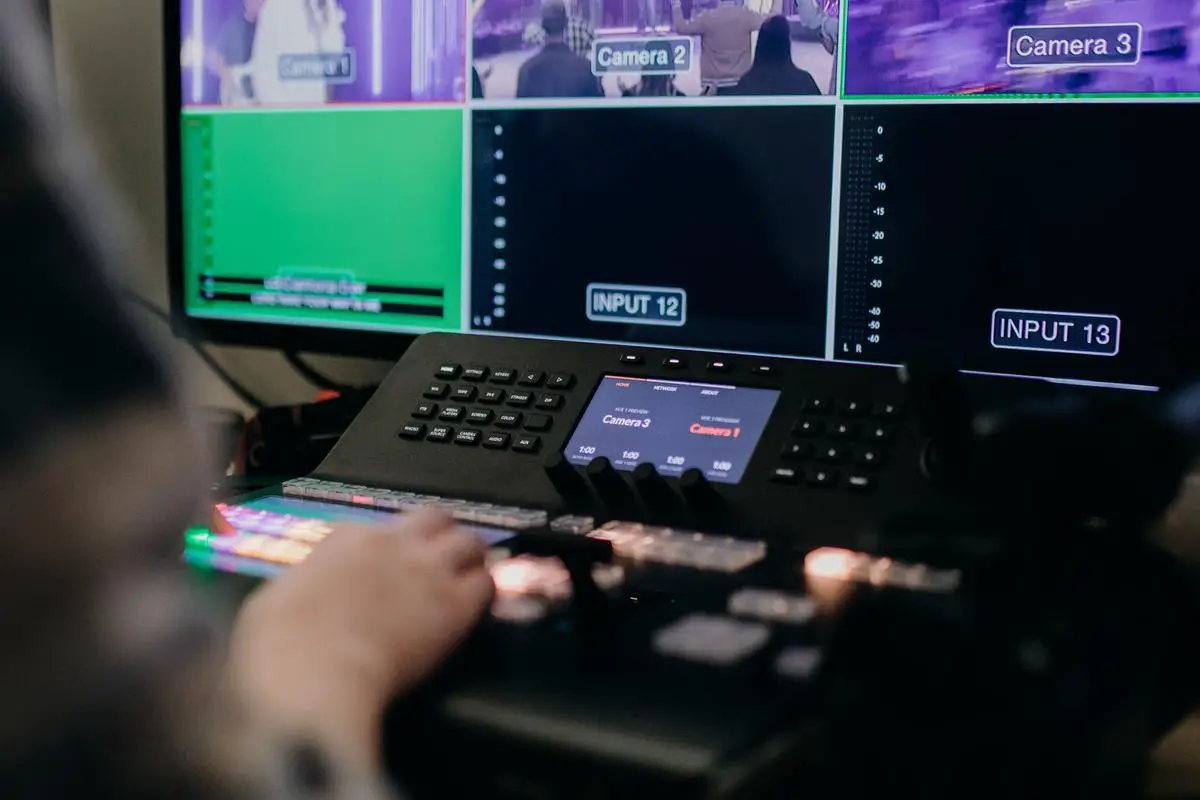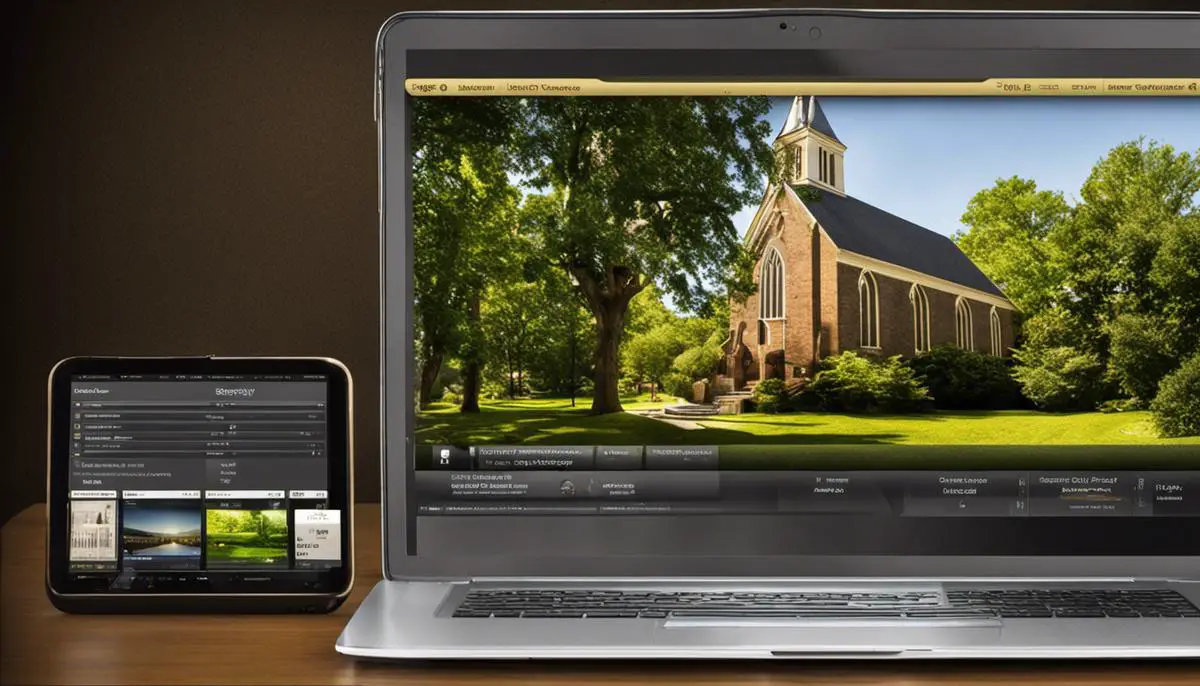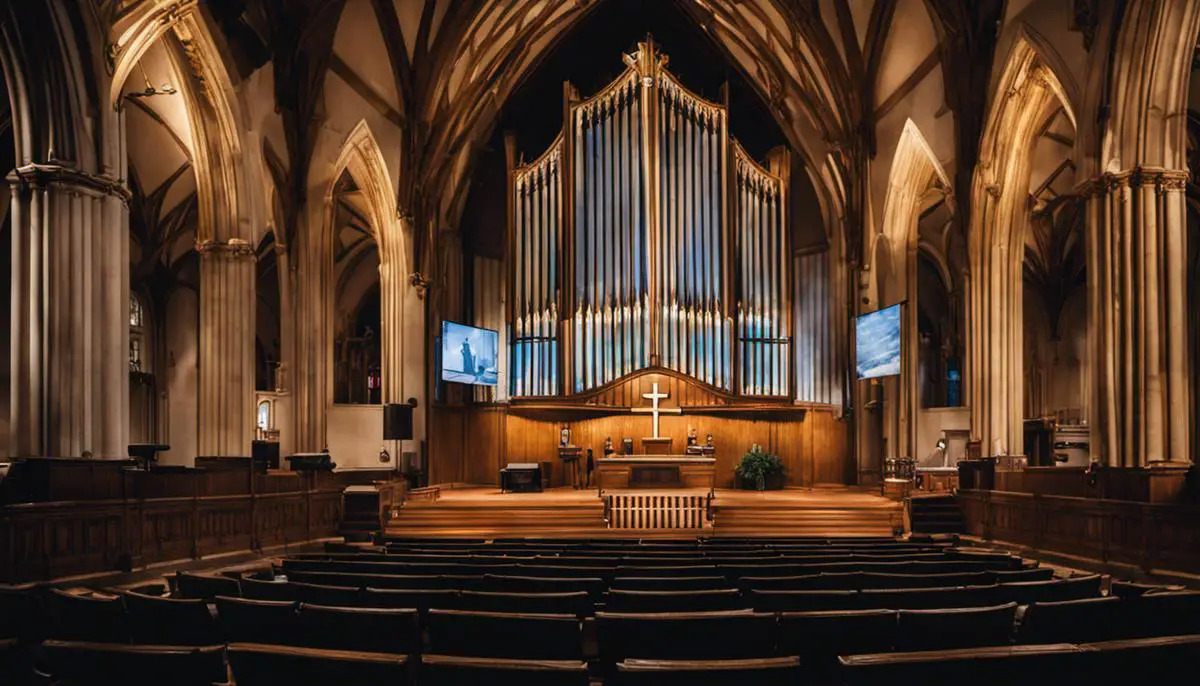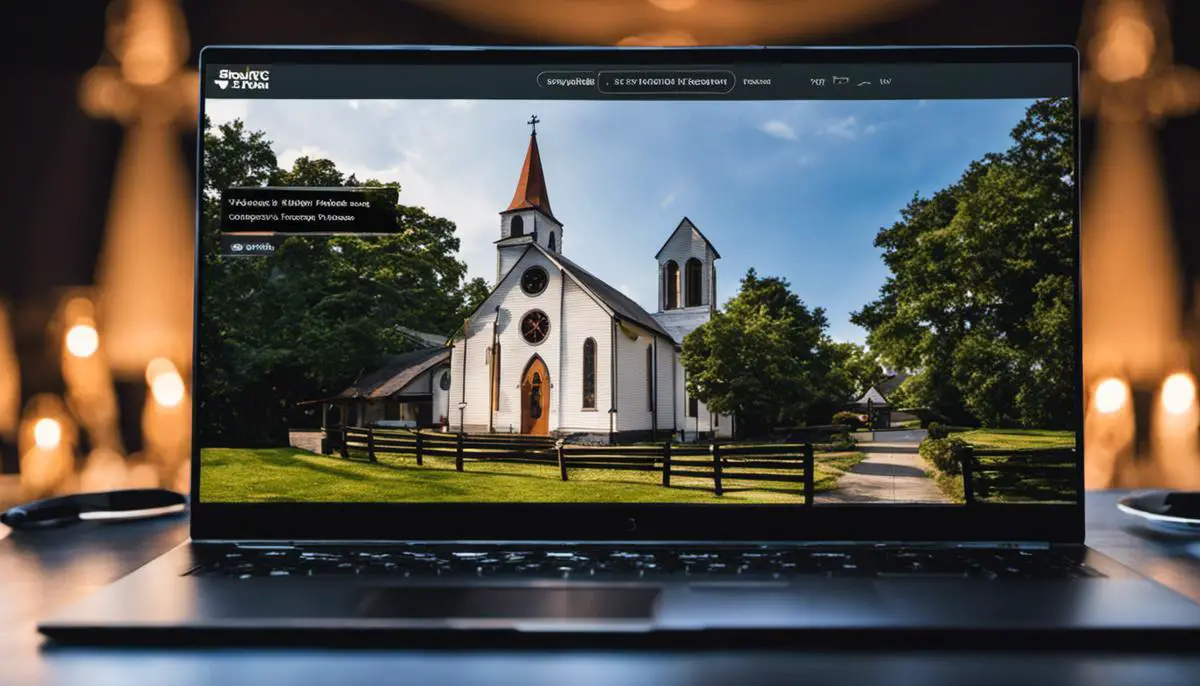As the digital era propels faith communities to new, virtual horizons, the importance of understanding and effectively utilizing church streaming software grows exponentially. The dynamic landscape of this technology has inspired transformative shifts in the way religious services are conveyed, fostering a closer connection between churches and their global congregations. The historical progression, market players, streaming quality, and the plethora of features offered by various software platforms are more than just technical jargon; they serve as the keystone in navigating this evolving terrain. This exploration serves as a comprehensive guide, providing insight into essential considerations and best practices that can empower churches to maximise their outreach and engagement through live streaming.
Development of Church Streaming Software
The Evolution of Church Streaming Software
In the realm of technological advancements, very few sectors have remained untouched—and the sphere of spirituality is no exception. One significant step forward has been the introduction and continual evolution of church streaming software, enabling religious communities worldwide to come together virtually. This rapid transition has consolidated technology’s role as a critical enabler of faith-based interactions.
In the nascent stages, church streaming software was a basic, almost rudimentary pet project for tech-savvy devotees. Accessibility to stable, high-speed internet was not a widespread phenomenon, thereby restricting the idea to larger, more technologically advanced congregations. However, not too surprisingly, this quickly changed.
The advent of webcasting in the late 1990s marked a pivotal moment in this evolution. Suddenly, religious leaders had doors opened to reach not just hundreds, but potentially thousands of congregants simultaneously. The early 2000s saw this become more sophisticated, with the incorporation of live chat features—creating an interactive, feedback-driven platform not previously accessible.
An intriguing key player in the technological advancement of church streaming services was the advent of social media platforms. As platforms like Facebook and YouTube started offering live streaming services, church-based streaming applications benefited from this development too. Users became accustomed to smooth, high-quality streaming, stoking the demand for similar capabilities in church software.
Software developers answered the call. The mid-to-late 2010s saw church streaming software pivot from internet broadcasting’s limitations to using cutting-edge tech solutions. Powerhouses such as Churchstreaming.tv and Sunday Streams came into play, offering a counter-culture to social media platforms. Emphasis was laid not only on video quality but on creating robust community platforms that enabled connections beyond the live sermon—such as prayer groups and bible study.
Another significant milestone was the integration of cloud-based technology that allowed scalability and flexibility, accommodating viewers from tens to thousands with minimal buffer times. This also ensured a smaller investment for churches—since expensive hardware and sizeable IT teams were no longer necessary.
Considered, at first, as an auxiliary service for those unable to physically attend the church services, the COVID-19 pandemic propelled church streaming software into a necessity. Now, amidst the new normal, what was once thought as ‘nice-to-have’ transformed into the primary means of connection for congregants globally.
Church streaming software no longer simply broadcasts sermons, but it actively participates in fostering connections among the community. Donations, prayer requests, group meetings are all integrated within a single platform, unleashing a vital avenue for religious fulfillment.
The landscape of church streaming software is rapidly evolving. The technology that was once seen as a novelty has been fully embraced by religious communities, and its role is indispensable. The future promises more connectivity, smarter features, and an even deeper integration of faith and technology—the evolution continues.

Understanding Streaming Quality & Features
As a technophile, it is impossible not to have a radar pinging at the emergence of new trends, and when it comes to church streaming software, the euphoria is just the same. Not to mention that a crisis like the COVID-19 pandemic only elevated the significance and usage of such technologies.
A key factor influencing the quality of such streaming services is the internet connectivity. The speed and stability of the internet connection at both the end of the streamer and the viewer determine the quality of the experience. A slow or fluctuating internet speed can lead to buffering issues, lower video quality, and even interruptions in the live stream. Therefore, a solid broadband connection is a necessity for excellent streaming quality.
The software’s processing capability also drastically impacts the streaming quality. The quality of the video footage captured and relayed by the camera is dependent on the software’s encoding efficiency. Higher the encoding efficiency, better is the video quality. Additionally, as the software needs to perform tasks like compression of video/audio data and concurrent streaming, the better the software’s processing capability, the higher is the overall streaming quality.
The user experience is another critical parameter in evaluating the quality of church streaming software. The user interface should be easy to use and navigate so that even attendees not very tech-savvy can participate effortlessly. A user-friendly design accompanied by intuitive controls enhances the engagement and participation of the congregation.
Extending the features by allowing multi-platform accessibility also improves quality and enhances the user experience. Being able to attend a service from any device, whether it’s a computer, tablet, or smartphone, and on any operating system, be it Android, iOS, or Windows, widens the reach and accessibility of the service.
Interactivity elements play a crucial role in enriching the quality of the church streaming experience. Features like comment sections, live polling, and real-time reactions can act as virtual amen corners, thereby bridging the gap between the in-person and online experience.
Lasty, the quality of church streaming software can be enhanced by introducing adaptive streaming technology, which adjusts the video quality in real-time based on the viewer’s network conditions. This feature mitigates low bandwidth or unstable network issues, ensuring a smooth and uninterrupted streaming experience.
While we dwell in a time where church streaming software is becoming more a necessity than a luxury, keeping these factors in mind ensures an optimal experience for both the provider and the viewer. As tech enthusiasts, we understand the importance of functionality and quality, and we know that this technology, like all others, will only evolve and improve with time.

Photo by izaakkirkbeck on Unsplash
Comparison of Church Streaming Software
Moving forth onto a more granular perspective, let’s delve into the specific leading church streaming software that dominate this digitized arena and their distinguishing factors.
Without question, among the front-runners is BoxCast. Acclaimed for its simplicity, BoxCast offers seamless streaming without the need for sophisticated broadcasting knowledge. End-users appreciate its tailored BoxCaster Pro device that liaises with cameras and sound systems effortlessly to recast high-quality broadcasts. Additionally, its cloud-based capabilities provide notable scheduling features and pre-recorded content support, empowering churches to automate broadcasts and attend to other pastoral duties.
Nipping at BoxCast’s heels is another competitor – ChurchStreaming.tv. This platform leans heavily on its user-friendly dashboard and dependability. Its ability to stream across multiple platforms – including Facebook, YouTube, and custom websites – makes it a magnet for churches seeking software robust enough to reach followers wherever they may be. Coupled with its efficient customer support structure, ChurchStreaming.tv is a compelling choice.
Thrusting headlong into this innovative arena is Restream. While it may not fit the typical mold of a “church streaming software,” Restream is setting the bar high for flexibility. By offering interactivity features like chat moderation and analytics, it carves out its place in the industry. Furthermore, its clout is boosted with its unrivaled capability to stream on over 30 platforms simultaneously, presenting an unprecedented opportunity for viewer reach.
Livestream, an offering from the internet staple Vimeo, should not be overlooked. Exemplifying truly professional-grade streaming software, it boasts direct streaming to social media platforms like Facebook and Twitter. Moreover, its high-end features include production software with in-depth analytics, API access, and the bandwidth to support an infinite audience. Livestream certainly deserves its spot among the leaders, albeit as a higher-tier option.
And finally, Worship Channels stands out with its specialization solely on church streaming. It espouses ease of use, with complete onboarding process for churches. Priding itself on its sterling quality, Worship Channels tackles the issue of software processing capability head-on; with adaptive streaming technology, it ensures end-users achieve an optimum viewing experience regardless of their internet speed.
Of course, the choice of the best church streaming software will largely rest on individual church needs, resources, and technological prowess. Nonetheless, these top options have proven their mettle, with their distinctive features continually shaping and shifting the landscape of church streaming services. As technology advances, this dynamic field will continue morphing, perpetually offering fresh, innovative solutions for church communities worldwide. As we look forward, it’s clear that the evolution of the church streaming software is far from over. Instead, it’s merely at the tip of the iceberg, promising even more revolutionary transformations ahead.

Choosing The Right Church Streaming Software
Stepping into the realm of church streaming software selection, certain key aspects should be evaluated thoroughly. These will help ensure that the final selection propels the church’s digital ministry to new heights.
- First on the inspection list should be the Software’s Customer Support. It’s crucial to identify the level of customer support offered by the service provider. Even the most tech-savvy individual can stumble across hitches and glitches. As such, a highly responsive customer support team that’s available 24/7, capable of solving technical issues and providing guidance during the setup process, can be invaluable.
- Next, evaluate the range of Customization Features present. Despite sharing a common goal of broadcasting church services, each church boasts a unique element. Therefore, a solution that provides a diverse range of customization options for the landing page, player, and overall viewer experience can truly capture the essence of the church’s brand and personality online.
- A key asset to any church streaming software is the Analytics Feature. Data is power. By offering detailed insights and analytics, a streaming solution empowers the church to understand their audience better, track viewer engagement, and subsequently optimize content strategy based on the stats and figures gleaned from the analytics report.
- Importantly, inventory the software’s Sustainability and Scalability. The software of choice should be robust enough to handle growing audience engagements while maintaining impeccable streaming quality. This means the software should be powerful enough to host all live broadcasts and store archived footage without experiencing any significant technical downtimes or speed issues.
- Factor in the costs and overall value. Effective software will balance high-end features and affordability. Allocation should be made for any additional costs, such as the fees for higher resolution streaming, transcoding, or simulcasting. Properly evaluating the cost-effectiveness of each option in alignment with your church’s specific requirements will ensure that every penny is well-spent.
- Moreover, consider how it integrates Donations and Revenue. A good church streaming software will have the ability to incorporate a user-friendly donation feature, which plays a huge role in fueling the expenses of the digital platform and the church’s other activities.
- Lastly, do thorough research regarding the Real User Reviews and Ratings. Understanding real users’ experiences will provide a better idea of the software’s everyday functionality and reliability.
Navigating the domain of technology-enhanced religion proves thrilling yet challenging. However, by following these guidelines, one can make an informed decision that will surely resonate with their church’s needs and ambitions, ensuring the seamless integration and operation of church streaming software.

Best Practices for Church Streaming
Streaming services, particularly for churches, have evolved rapidly, creating a richer and more engaging experience for viewers. Yet, there’s always room for improvements. To enhance the church streaming experience, a few best practices can be applied.
One critical aspect often omitted when examining streaming software is the level of customer support provided. Uninterrupted streaming is vital for maintaining viewer engagement, and access to reliable customer support can be crucial. Problems can arise at any time, and a dedicated support team ensures you’re never left stranded, trying to troubleshoot in the middle of a service. Paying attention to this aspect while choosing software can significantly improve the church streaming experience.
An engaging church stream isn’t one-size-fits-all. Having a wide range of customization features at your disposal will allow you to adapt and tailor the streaming experience to your church’s individual needs. The ability to personalize graphics, lower thirds, the aspect ratio, and even the bitrate quality can make the difference between a detached viewer and a fully immersed member of your digital congregation.
Another aspect to consider is the availability and depth of analytics tools. These range from simple viewership count to more sophisticated demographics, engagement metrics, and playback data. Leveraging analytics data will help you understand your viewers better, identify areas of improvement, and develop strategies to reach wider or more targeted audiences.
The sustainability and scalability of the software are essential factors to keep in mind. The streaming solution must be reliable enough to manage current streaming requirements, and scalable to accommodate future growth. This includes the increased number of viewers, additional platforms for streaming, or expanded content offerings.
Understanding the cost-value relationship is crucial when considering church streaming software. Affordable options may be tempting, but ensure they offer the full range of features to meet your needs. Conversely, while more expensive options might provide a comprehensive suite of features, check if all those features are beneficial and used regularly by your tech team.
An often overlooked but valuable feature is the ability to integrate offerings and donations directly into the streaming platform. This facilitates spontaneous and planned giving while driving further church engagement. Think through the most convenient and unobtrusive ways to introduce this feature and put it into practice.
Lastly, take time to read real user reviews and ratings. Look beyond the marketing hype to get an idea of other users’ real-life experiences. This practice will provide a more comprehensive understanding of software performance, user-friendliness, and possible technical issues.
Enhancing church streaming experiences isn’t a distant dream. With a rational, analytical approach and an eye for detail, adopting these best practices can lead your church into a digital era filled with endless possibilities. Your congregation awaits.

Indeed, as we navigate the sea of technological advancements and rapid digitalization, the right church streaming software becomes the lifeline not just to sustain but to thrive. Beyond the mere transmission of services, it can create immersive, engaging virtual experiences, fostering deeper connections within faith communities. Striking the right balance between technical excellence and maintaining the essence of worship is a challenge churches face today.
Equipped with the knowledge of the history, features, comparisons and selection parameters of church streaming software, and armed with the best practices for church streaming, churches can skillfully take on this challenge. Ultimately empowering them to bring their congregations closer in a way that resonates with the ethos of their faith, even from across the digital divide.













